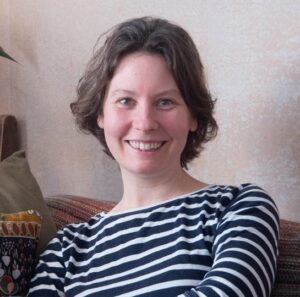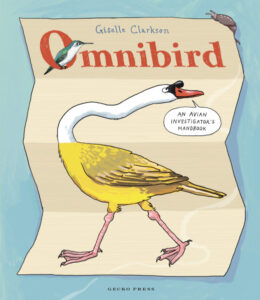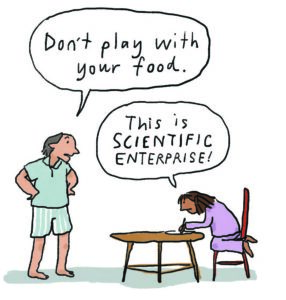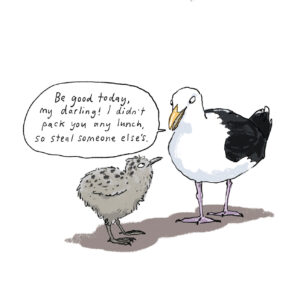

Giselle Clarkson is an author, illustrator, and comic artist based in Greytown, New Zealand, known for her work on conservation and environmental topics. She has written and illustrated award-winning picture books and nonfiction and is an Arts Foundation Laureate.
Her newest book, Omnibird: An Avian Investigator’s Handbook is a highly illustrated, playful field guide to common international birds. Bringing the art of observology to the science of ornithology, it shows the many ways familiar creatures are remarkable when you take time to look.
What’s your new book about?
Omnibird is a big, funny book all about ornithology. The first half teaches you the investigation techniques you need to be an omnibirder, as well as facts about anatomy, habitat, and behaviour that apply to almost any bird.
The second half contains dossiers on 18 common birds, plenty to get you started on your own omnibirding career.
What’s an omnibird?
There are about 10,000 species of bird in the entire world, which is way too many to satisfactorily put into one book so I invented omnibirding.
The basic idea is that if you break any bird into its component parts, you can use Holmesian deduction to gather information about it, even if you don’t know what the species is called.
Take a beak, for example. Beaks come in a bunch of different forms. They can be long, short, broad, or they can have a big curve in them. They have those shapes for a purpose, and once you understand what that purpose is then you will know what the bird eats and that in turn can tell you something about where the bird lives. The same reasoning can be applied to a bird’s feet, legs, feathers, eggs or poop. That’s what being an avian investigator is all about.

Is it a sequel to The Observologist?
It’s not a sequel! But The Observologist and Omnibird do make a fantastic pair because many of the principles of observology also apply to omnibirding. Everything that readers loved about The Observologist they will also find in Omnibird.
It’s got the same approach to science, it’s got the same sense of humour, it’s got cartoons and how-tos and all that good stuff. It just has slightly larger pages because birds are bigger than centipedes—usually!
Where do all these bird facts come from?
I’ve been an avian investigator my entire life, and this has given me a long time to stash away an awful lot of facts about birds. So that was how I started making Omnibird. I just spilled my brains onto the page and then went to the library and did some good old-fashioned research to back things up.
 I always start writing from my own experience and my own observations because I think it gives my books this interactive quality. Readers can learn something from the page and then apply it almost immediately next time they look out the window. It gives an instant payoff to learning that makes it so much fun. It’s what I love to do myself, and the experience I want to share with my readers.
I always start writing from my own experience and my own observations because I think it gives my books this interactive quality. Readers can learn something from the page and then apply it almost immediately next time they look out the window. It gives an instant payoff to learning that makes it so much fun. It’s what I love to do myself, and the experience I want to share with my readers.
When I finished writing Omnibird it was checked by two brilliant ornithologists to make sure I wasn’t spouting a load of rubbish. In this age of ChatGPT and AI, when it’s getting harder and harder to identify fact from fiction, it’s really important to me that my book is a good source of information. It’s funny and it’s entertaining but it’s also full of real, solid science that readers can rely on.
What birds are in it?
I want Omnibird to be relevant to as many kids around the world as possible, no matter where they live—whether that’s a city or a rural area, Northern or Southern hemisphere. For that reason the species I’ve chosen to focus on are really common all over the world. Think chickens, ducks, sparrows, starlings, gulls . . . birds that we’re really familiar with because they tend to thrive in our human environment, but we may not have looked at them very closely. All the skills of omnibirding can be learnt while observing common birds and then be applied to any bird, anywhere in the world.


